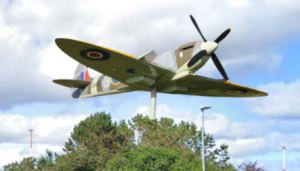German POW – Camp 165
Prisoner of War Camp 165
Camp 165 was located in the village of Watten, Caithness, eight miles (12 km) northwest of Wick on the road to Thurso.
Originally considered to be an ordinary PoW (Prioner of War) camp, archive records which became available around 2007 showed that the isolated camp had a much more serious purpose than simply holding prisoners captured during World War II, and was in fact a holding camp for some of the most notorious members of the Third Reich, referred to as Black PoWs, and also functioned as a de-Nazification centre.
The PoW camp was visible in aerial photographs taken in 1946, on the south side of the main road through Watten village, northwest of the junction of the A882 and the B870. The camp can be seen within a double line of fencing which surround the main compound, with rows of Nissen huts inside for the prisoners, and huts outside for the staff and guards. Created within the camp were a church, barbers, classrooms, workshops, and theatre, for use only by ordinary PoWs.
There are no remains reported of the former camp site which is now occupied by modern housing, with Bain Place and Achingale Place said to mark the site. The former football pitch which lay within the camp is now a modern playing field.
The Secret Purpose of Camp 165
Generally recognised only as an ordinary PoW camp site from World War II, recently released records have revealed that Camp 165 was actually one of the most secret camps of the time, ideally located in what was then a well isolated and remote location, surrounded by open, flat land with little opportunity for escapees to hide. Other than those directly involved, and locals employed there, it seems that few were aware of the camp’s purpose, and that it housed some of the most infamous officers of Hitler’s Nazi regime.
Operating from 1943 to 1948, the camp’s secret purpose was to provide a place where a number of the most notorious members of Hitler’s Third Reich could be held securely, interrogated, and if possible, de-Nazified.
The camp was divided into a number of areas. Area A was for ordinary PoWs, not considered to offer any sort of threat, and allowed to work on the surrounding farmland, as was the case at many standard PoW camps, dressed in uniforms with a highly visible diamond pattern on the back. Area B was reserved for those considered to be hardline, dangerous Nazis, and was overseen by armed guard on watchtowers. These Black PoWs were subjected to a de-Nazification programme, consisting of repeated viewings of films outlining the atrocities carried in the name of the Third Reich, and newsreels showing their defeat by the Allies. This inner compound was nicknamed by its occupants as Little Belsen.
Those considered to have been reformed were released for repatriation, however those that remained unrepentant and were seen to remain a threat were classified as Category C, and transferred elsewhere for further interrogation, or to stand trial.
Infamous Inmates
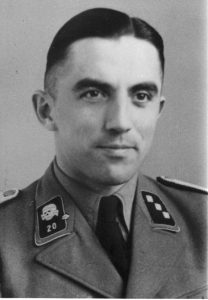
SS-Sturmbannführer (Major) Paul Werner Hoppe was held at Camp Watten between August 1947 and January 1948 and it was expected that he would be executed on his return to Germany – Hoppe had been commandant of Stutthoff concentration camp, Poland between 1942 and 1945.
No longer fit for service due to a wound received on the Eastern front, he was recalled into the concentration camp service, which he had already belonged to as a member of Dachau camp staff from 1937 to 1941. Said to have escaped from a British base in Saxony, and able to work as a landscape gardener.
Hoppe was re-arrested in 1953 and sentenced to nine years in prison, insisting he had been too young to understand what happened at his camp, and was released after serving seven and a half years.

SS-Sturmbannführer (Major) Max Wünsche. Wünsche and his regiment were credited with destroying 219 enemy tanks up to mid July 1944, in response to the British and Canadian D-Day landings of June 6, 1944, and for his resolute leadership he was awarded Oak Leaves to the Knight’s Cross on August 11, 1944.
His early career began in 17. Kompanie, where he stayed until October 1, 1938, after which he was assigned to the Begleitkommando des Führers (Hitler’s personal escort detachment) where he served as a Orderly Officer. Remaining in this post throughout the invasion of Poland, on January 24, 1940, he was transferred back to the Leibstandarte, posted as commander of the 2. Zug in 15. Kradschützenkompanie under the command of Kurt Meyer. Wünsche remained in this post throughout the invasion of France and the low countries, returning to the BdF on June 1, 1940.
After what was described as “a minor scandal” in which Hitler’s butler complained of the Orderly Officer’s “not behaving correctly”, Wünsche was dismissed and re-assigned to the Leibstandarte, posted as an Adjutant on December 5, 1940. Wünsche survived the war, becoming manager of an industrial plant in Wuppertal, Germany, and died in Munich on April 17, 1995, aged 80.

SS-Oberführer (Senior Colonel) Otto Baum. Baum was born on 15 November 1911 in Hechingen-Stetten, a son of a merchant. From 1930 to 1932, he studied two semesters of agriculture at the University of Hohenheim. He served as a battalion commander in 3rd SS Totenkopf Infantry Regiment during the Operation Barbarossa, invasion of the Soviet Union. After recovering from severe wounds in 1943, he was promoted to regimental commander, and eventually reached the rank of SS-Oberführer. Bauer took command of the SS Division Das Reich in July 1944, and saw action in the Falaise Pocket.
By the end of January 1945, Baum and his of the 16 SS-Panzergrenadierdivision found themselves pushed back to the River Po, and on the 8th May 1945 he was captured and sent to an English PoW camp before being sent to Camp 165 in 1947. Whilst at Camp 165 he was classed as a Category C+ political prisoner but was later moved to Featherstone Park at Haltwhistle in Northumberland.

SS-Oberführer (Senior Colonel) Walther Ewert. Ewert was born on November 20th 1903 in Zalesie-Schubiin and started his military career when he joined the German Army in 1921. In 1935 he joined the Nazi-party and the SS, and on the 20th of April 1935 was commissioned SS-Obersturmführer (First Lieutenant) in the Leibstandarte SS Adolf Hitler (LSSAH).
Exactly 10 years later he had risen to the rank of SS-Oberführer, and was endorsed by the notorious SS-Oberst-Gruppenführer und Generaloberst der Waffen SS (SS Supreme group leader and colonel general of the Waffen-SS) Sepp Dietrich and awarded the War Service Cross with swords in December 1944 for managing to keep the supplies reaching the troops of the LSSAH, despite the damaged caused to the road and rail networks following the Allied invasion of Normandy in June 1944.
Ewet was eventually captured by the Americans and was sent to Camp 165 in 1947 as he was also classed as a Category C+ political prisoner. He remained in captivity until 1948 and died in 1976.
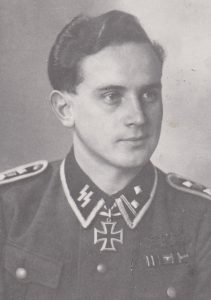
SS-Untersturmführer (Second Lieutenant) Erich Zeppler. Zeppler was born in November 1915 at Sebnitz in Saxony. During the war he was assigned to 2. SS-Panzergrenadierregiment Westland and 5. SS-Panzerdivision Wiking, and served on the eastern front. He was awarded the Knight’s Cross in December 1943. Zeppler spent time at Camp 165 and was held in captivity by the British until 1948.
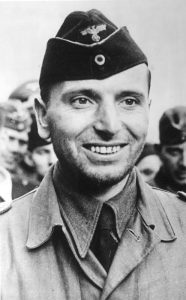
U-Boat Kapitänleutnant (Captain Lieutenant) Otto Kretschmer. Became famous with U-99 for his night-time surface attacks against convoys, were his motto “One torpedo… one ship” was created and he came to be known as the Wolf of the Atlantic.
In November 1939 he laid nine mines in the Moray Firth, Scotland. Of note was the sinking of three British Armed Merchant Cruisers: Laurentic (18,724 tons), Patroclus (11,314 tons), and Forfar (16,402 tons) in November 1940, a total of more than 46,000 tons, when “Silent Otto” became the “tonnage king” among U-boat men, a title he never lost. His last patrol was similarly successful, when he attacked 10 ships.
He was captured after scuttling U-99 at 03:43hrs on March 17, 1941, southeast of Iceland after depth charge damage inflicted by the British destroyer HMS Walker. Kretschmer managed to surface his badly damaged boat and save 40 out of his crew of 43, his chief engineer died before the boat sank for the last time. He was to spend more than six and a half years in British captivity, and more than four years was held in Canada, in Camp 30, often referred to as Camp Bowmanville, from where he maintained contact with BdU. In December 1947 he returned to Germany.
In 1955, Kretschmer joined the Bundesmarine (postwar German navy)., then in 1957, he become commander of the 1. Geleitgeschwader (1st Escort Squadron). In November 1958, he became commander of the Amphibische Streitkräfte (Amphibian Forces), and from 1962 he served in several staff positions before becoming Chief of Staff of the NATO Command COMNAVBALTAP (Commander Allied Naval Forces Baltic Approaches) in May 1965, where he remained for four years.
In September 1970, he retired with the rank of Flotillenadmiral, but in 1998, Otto Kretschmer died in a Bavarian hospital following an accident during a summer vacation.

U-Boat Kapitänleutnant (Captain Lieutenant) Hans-Joachim von Morstein. Von Morstein was born in Karlsruhe in August 1909 and joined the Kriegsmarine in October 1928. By December 1941 he had risen to the rank of Kapitänleutnant and had been given command of U-483. U-483 had considerably little success during the war but was successful in sinking the British Captain Class frigate, HMS Whitaker on the 1st November 1944.
When von Morstein was captured he spent time at Camp 184 in Llanmartin, Wales before being transferred to Camp 165, where he was held as a category B- political prisoner.
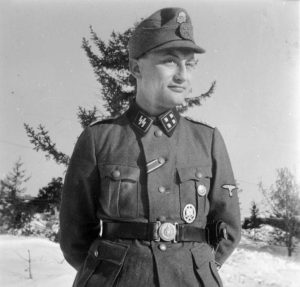
Nazi journalist and propagandist Gunter d’Alquen was sent to Watten in 1945. While there, he was allowed to publish a monthly magazine, Der Wattener, for the detainees. d’Alquen was a captain in the SS, and was spotted by Heinrich Himmler in March 1935, and appointed editor of the official SS paper, Das Schwarze Korps.
He became a prominent SS war reporter after September 1939, and towards the end of the war was appointed by Himmler as head of the Wehrmacht propaganda department. He went on to publish an official history of the SS, Die SS Geschicthe, Aufgabe und Organization der Schutzstaffeln der NSDAP (1939), and also edited Das ist der Sieg (1940) and Waffen-SS im Westen (1941).
His past continued to follow him after the war, and in July 1955 he was fined 60,000 marks by a Berlin de-Nazification court, deprived of all civic rights for three years and debarred from drawing an allowance or pension from public funds. He was found guilty of having played an important role in the Third Reich, of war propaganda, incitement against the churches, the Jews and foreign countries, and incitement to murder. He had glorified the SS State and Hitler’s infallibility, brought democracy into contempt, and encouraged antisemitism. After a further investigation into his earnings from Nazi propaganda, he was fined a further 28,000 marks by the Berlin de-Nazification court in January 1958.
After the camp closed he was sent to the US, where he became a key member of the CIA and helped devise its anti-communist propaganda strategy during the early Cold War.
Dr Paul Schröder had worked at Peenemünde on the V-2 rocket programme under the tutelage of Major-General Dr Walther Dornberger. Schröder had been closely watched by the British and when captured was sent to Camp 165, the most secure camp in the United Kingdom because of his work at Peenemünde.
The Famous Artist Karl Weschke was interned at Camp 165 for a duration after getting into an altercation with an Interrogation Officer at Chepstow. Weschke Joined the Hitler Youth and then the Luftwaffe in 1942, and was captured in the low countries. During his time at Camp 165 he learned that his father, whom he had only met once had died in a Nazi concentration Camp, so he decided to become a British citizen. Whilst at Camp 165 he took up carving and then painting came naturally to him. He was held in captivity until 1948 then finally moved to Cornwall in 1955.
Weschke painted many fine art works, some of which hing in the tate gallery. He died in February 2005.
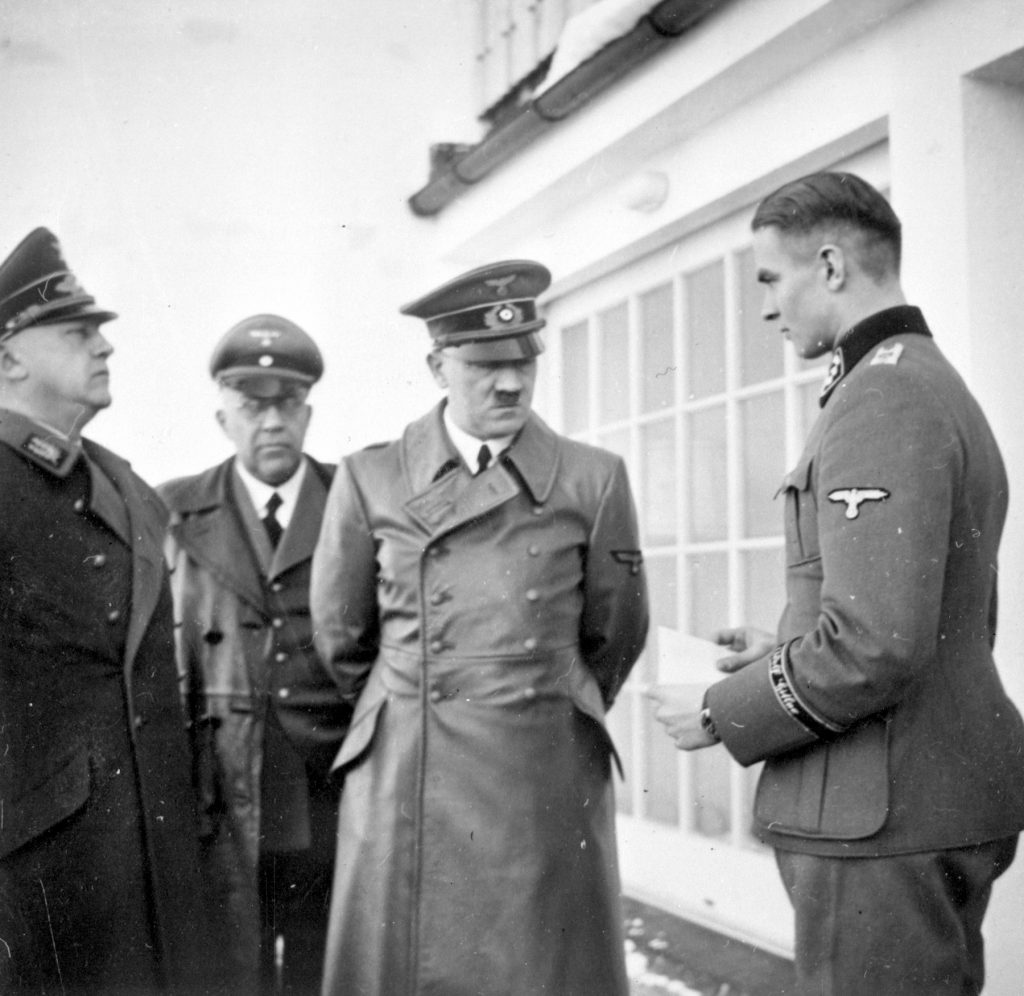
Text credited to www.secretscotland.org.uk

